www.WillhiteWeb.com
Led by Captains John T. Baker and Alexander Fancher, a California-bound wagon train from Arkansas was camped in this valley in the late summer of 1857 during the time of the so-called Utah War. In the early morning hours of September 7th, a party of local Mormon settlers and Indians attacked and laid siege to the encampment. For reasons not fully understood, a contingent of territorial militia joined the attackers. This Iron County Militia consisted of Latter-day Saints (Mormons) acting on orders from their local religious leaders and military commanders headquartered thirty-five miles to the northeast in Cedar City. Complex animosities and political issues intertwined with religious beliefs motivated the Mormons, but the exact causes and circumstances fostering the sad events that ensued over the next five days at Mountain Meadows still defy any clear or simple explanation.
During the siege, fifteen emigrant men were killed in the fighting or while trying to escape. Then late Friday afternoon, September 11th, the emigrants were persuaded to give up their weapons and leave their corralled wagons in exchange for a promise of safe passage to Cedar City. Under heavy guard, they made their way out of the encirclement. When they were all out of the corral and some of them more than a mile up the valley, they were suddenly and without warning attacked by their supposed benefactors. The local Indians joined in the slaughter, and in a matter of minutes fourteen adult male emigrants, twelve women, and thirty-five children were struck down. Nine hired hands driving cattle were also killed along with at least thirty-five other unknown victims. At least 120 souls died in what became known as the Mountain Meadows Massacre. Seventeen children under the age of seven survived the ordeal and were eventually returned to Arkansas. One or more other children may have remained in Utah.
Mountain Meadows Monument
Location: Highway 18 between Enterprise & St. George
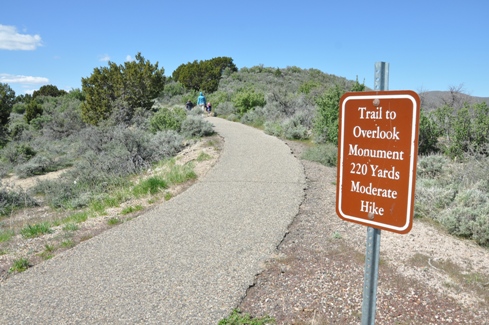
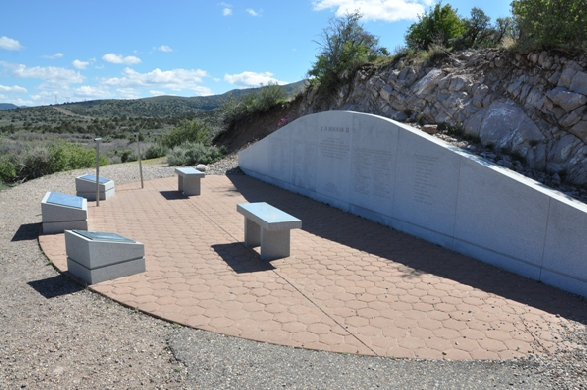
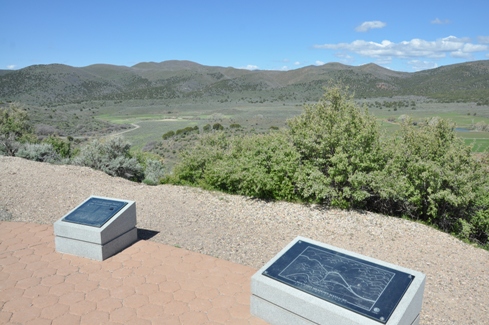
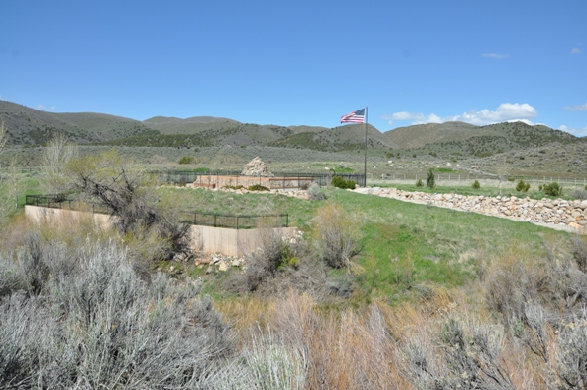
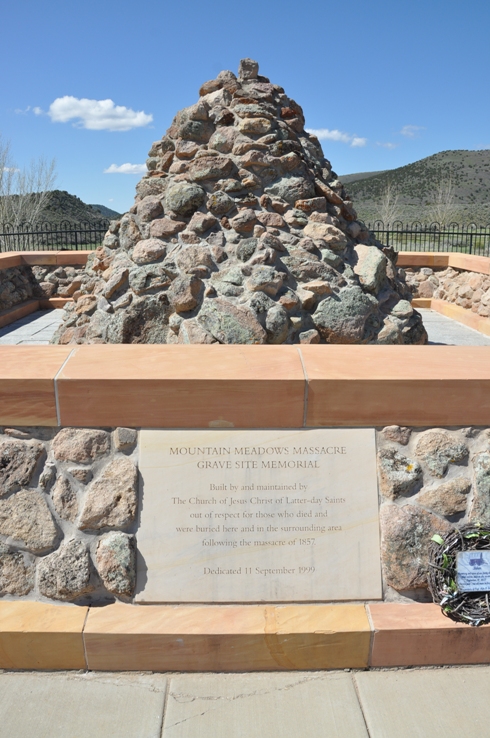
Grave Site Memorial
Built and maintained by The Church of Jesus Christ of Latter-day Saints out of respect for those who died and were buried here and in the surrounding area following the massacre of 1857.
Mountain Meadows Massacre Grave Site Memorial
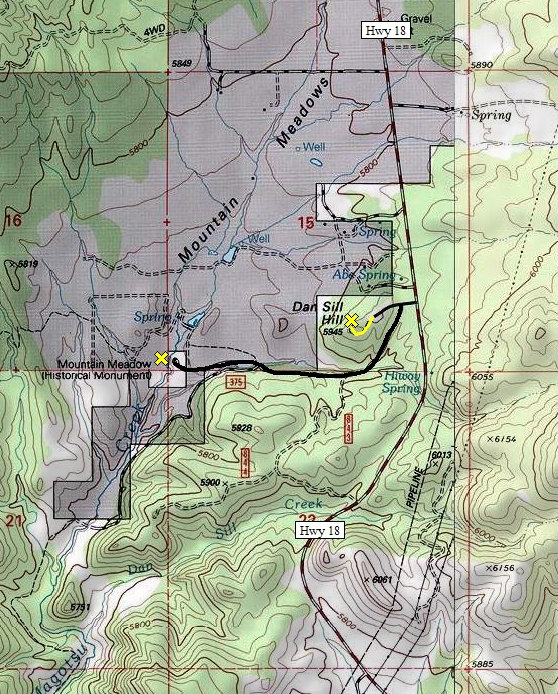
Mountain Meadows Overlook Monument
View to the Grave Site Memorial from the overlook monument
The trail to the Overlook Monument
Mountain Meadows Massacre Grave Site Memorial
1859 The original monument at this site was established by the U.S. Army. It consisted of a stone cairn topped with a cedar cross and a small granite marker set against the north side of the cairn and dated 20 May 1859. Military officials marked some other burial sites in the valley with simple stone cairns.
1932 The Utah Trails and Landmarks Association built a protective stone wall around the 1859 grave site in September 1932. The association president was George Albert Smith of the Quorum of the Twelve Apostles and later President of The Church of Jesus Christ of Latter-day Saints.
1936 The Arkansas Centennial Commission and Arkansas History Commission placed a cast iron historical marker on Highway 7 about three miles south of Harrison, Arkansas. The marker, near the William Beller home and what is now known as Milum Spring, identifies the area as the departure place for some members of the caravan.
1955 On 4 September 1955, the Richard Fancher Society of America unveiled a granite memorial to the victims in a park at Harrison Arkansas.
1990 The State of Utah, families of the victims, and local citizens erected the Mountain Meadows Memorial on a nearby hill. The granite marker lists the known victims and surviving children. President Gordon B. Hinckley of The Church of Jesus Christ of Latter-day Saints dedicated the memorial on 14 September 1990 during a meeting in Cedar City.
1999 Under the direction of President Gordon B. Hinckley and with the cooperation of the Mountain Meadows Association and others, The Church of Jesus Christ of Latter-day Saints replaced the 1932 wall and installed the present Grave Site Memorial. President Hinckley dedicated the memorial on 11 September 1999.
Other Memorials
The Baker-Fancher emigrants buried the bodies of ten men killed during the siege somewhere within the circled wagons of the encampment located west of the current monument in the valley. Most of the Baker-Fancher party died at various locations northeast of the encampment. In May 1859, Brevet Major James H. Carleton, commanding some eighty soldiers of the First Dragoons from Ft. Tejon, California, gathered scattered bones representing the partial remains of thirty-six of the emigrants, interred them near the wagon camp, and erected a stone cairn at the site. Before Carleton's arrival, Captains Reuben T. Campbell and Charles Brewer along with 207 men from Camp Floyd, Utah, collected and buried the remains of twenty-six emigrants in three different graves on the west side of the California road about one and one-half miles north of the original encampment. Brewer reported that "the remains of (an additional) 18 were buried in one grave, 12 in another and 6 in another."
Since the erection of the memorial by Major Carleton, several local families, including the Platts, Lytles, and Burgesses, have preserved and protected the graves in this area from being desecrated by souvenir hunters, land developers, curiosity seekers, and other intruders. In 1999, the Mountain Meadows Association collaborated with The Church of Jesus Christ of Latter-day Saints in erecting the new monument over the spot of the original 1859 grave. On August 3rd, 1999, workers excavating for the footings for a wall around the new monument accidentally uncovered the Carleton grave. On September 10th, 1999, the remains recovered from that grave were reinterred in a burial vault inside the new wall. The monument was dedicated the following day, September 11th, 1999.
The Burial Sites





